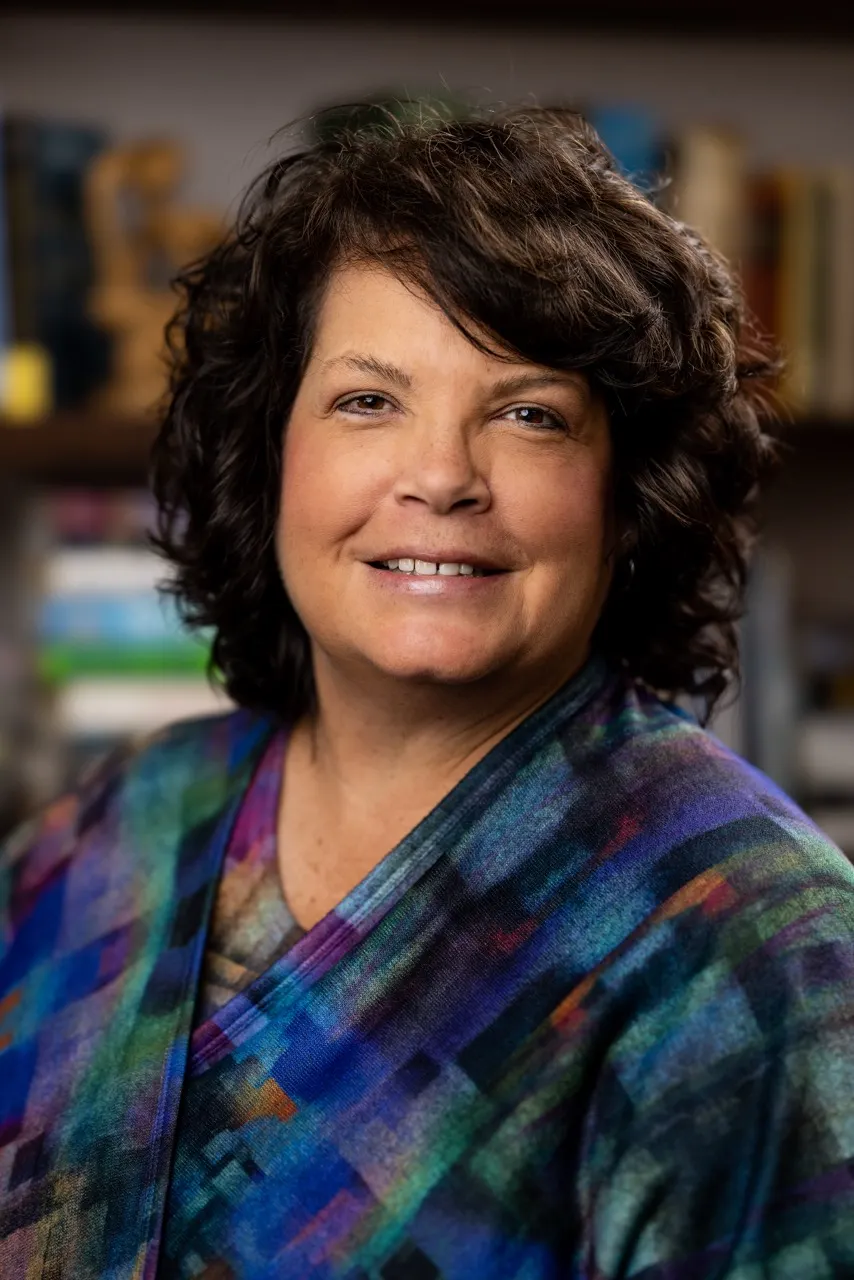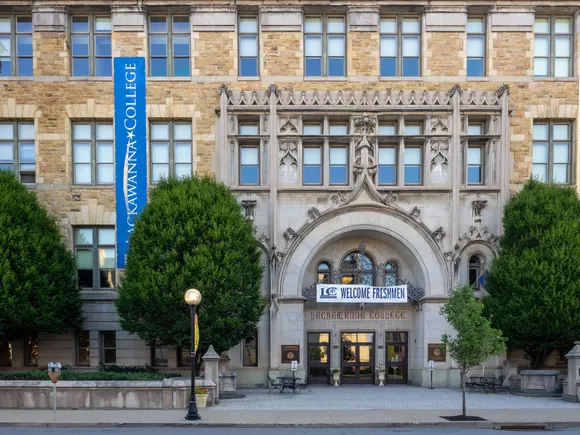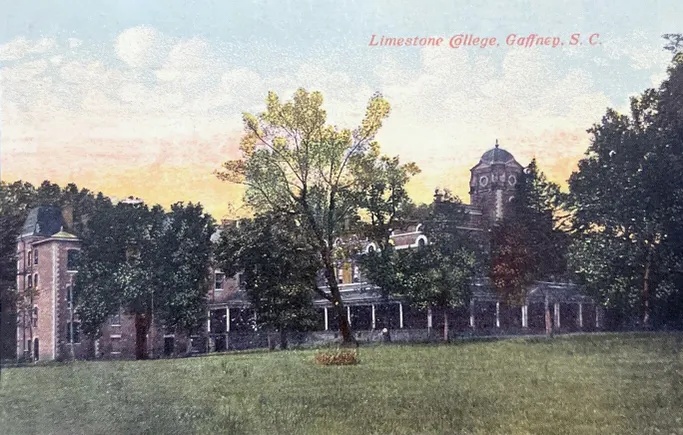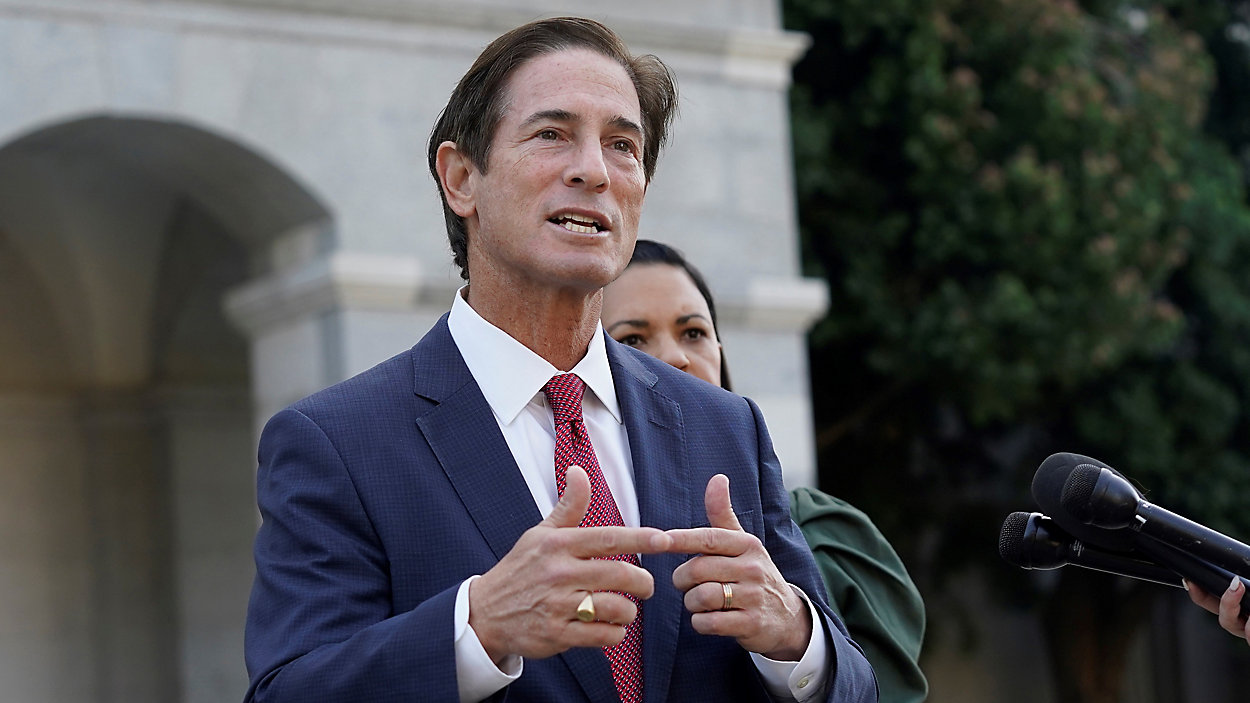Listen to the article
Jill Murray is the president and chief innovation officer of Lackawanna College, a private nonprofit institution whose main campus is located in Scranton, Pennsylvania.
Earlier this summer, as graduates across the country walked onstage, shook hands and received their diplomas, speakers from all walks of life stood before them and shared messages of hope, inspiration and guidance. They spoke of overcoming obstacles, leaning into change and finding the path to fulfillment. They painted broad pictures of how the Class of 2025 can embark on their next chapter with meaning and purpose.
In hearing these commencement speeches, it became clear to me that the higher education industry could use one of its own.
Like our graduates who have been transformed by their time in college, higher ed is undergoing its own transformation. From regulatory complexities to financial pressures and enrollment challenges, higher ed must turn a new chapter to meet the needs of students and communities today.
While those hurdles might feel insurmountable, colleges can look beyond their traditional ways of operating to succeed in this new environment. Through partnership and collaboration with other institutions rooted in a shared mission to make education accessible, we can best serve our students, communities and society at large.

Jill Murray, president and chief innovation officer of Lackawanna College
Permission granted by Nick Puleo on behalf of Lackawanna College and Todd Hiller Photography
As president of Lackawanna College, I’ve witnessed this firsthand. On June 30, our merger with Peirce College of Philadelphia was approved by the Middle States Commission on Higher Education, nearly a year after we first announced our intent to join forces.
As we enter the first phase of our integration, I find myself reflecting on valuable lessons about the power of collaboration that can help other leaders in higher ed as they embark on the next chapter for their institutions. For colleges and universities across the country, the message of my would-be commencement speech is simple — we all need to grow with purpose. Here’s how.
1. Make mission matter
Merger and acquisition activity in higher ed has soared in the last few years — a nearly threefold increase between 2001-2005 and 2016-2020, according to a 2023 McKinsey & Co analysis. Strategic partnerships allow likeminded institutions to combine resources and better meet the needs of today’s students, who increasingly want more flexibility. That can mean everything from in-person and virtual offerings to certifications, microcredentials and accelerated master’s programs.
The keyword here is “likeminded.” For a merger to succeed, it’s critical that the parties are aligned on mission and values.
From the start, Lackawanna and Peirce knew that we held the same core belief in the transformative value of education. We shared a deep commitment to providing accessible, affordable, high-quality education to help individuals transform their lives. When you approach something as significant as a merger with such foundational agreement and common ground, you can know that the ultimate goal — to better serve students and the workforce — will remain the driving force of the partnership.
2. Evolve with intention
We tend to view growth as a good thing. But without a strategic intent or plan, growth can quickly balloon out of control or not occur at all. For higher ed institutions, growth areas should focus on what current and prospective students — and the community — need.
Partnerships should be driven by a desire to combine strengths and expand opportunities, not just grow numbers. When we embarked on our partnership with Peirce, we did not do so with the goal of becoming the largest open-enrollment, private, nonprofit institution in the Commonwealth of Pennsylvania at the undergraduate level.
Our goal was to offer our students a more expansive breadth of innovative learning experiences that would provide greater flexibility and career preparedness. By combining our offerings, we now have a comprehensive and robust academic offering, ranging from certificates to graduate programs, for students of all ages and backgrounds. This growth is meaningful for our students and our communities.
3. Embrace innovation
Higher ed has entered a new era — one in which prospective students are reevaluating the value of a college degree. Only 1 in 4 U.S. adults “say it’s extremely or very important to have a four-year college degree in order to get a well-paying job in today’s economy,” according to a 2023 Pew Research Center survey. Students of all ages and backgrounds are looking for new educational avenues that are affordable, accessible, and will give them the skills they need to advance in their careers.
Higher ed institutions remain a critical resource, but we must be willing to be disruptive, embrace innovation and explore new models if we want to continue to serve new generations of students.
The key to this is proactivity. Lackawanna and Peirce didn’t join forces out of necessity. We joined forces because we knew it was the best way to give our students and our communities access to affordable, high-quality education in a variety of modalities and academic pathways. Together, we can better serve their needs today and tomorrow.
The future is bright
Like any good commencement speech, I’d close by assuring the audience that the future of higher education is bright. We are in the unique position of being the ones to shape it, so long as we aren’t afraid of disrupting the status quo.




![[Podcast] EdTech Evolution | Higher Ed Dive [Podcast] EdTech Evolution | Higher Ed Dive](https://imgproxy.divecdn.com/VUblH9e_Wy3fxAzne7ks4nHDDtEcUBeZqEyQwohnOfk/g:ce/rs:fit:770:435/Z3M6Ly9kaXZlc2l0ZS1zdG9yYWdlL2RpdmVpbWFnZS9WaXRhbFNvdXJjZV9IaWdoZXJFZERpdmVfUG9kY2FzdF8wNTAxMjVfQ292ZXJJbWFnZV9GSU5BTC5wbmc=.webp)





















